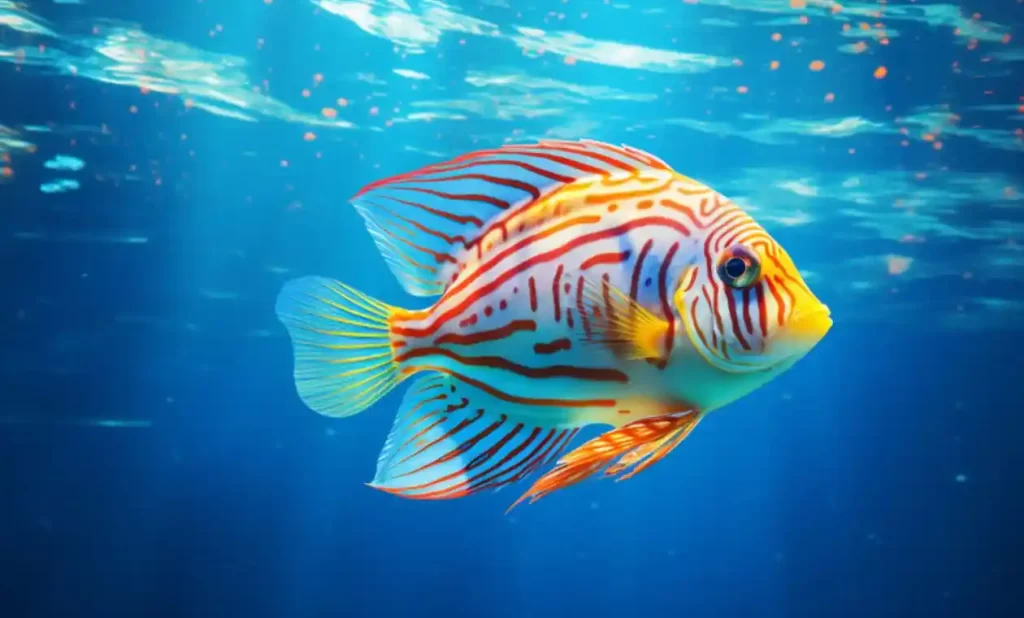Beautiful Discus Fish: A Guide
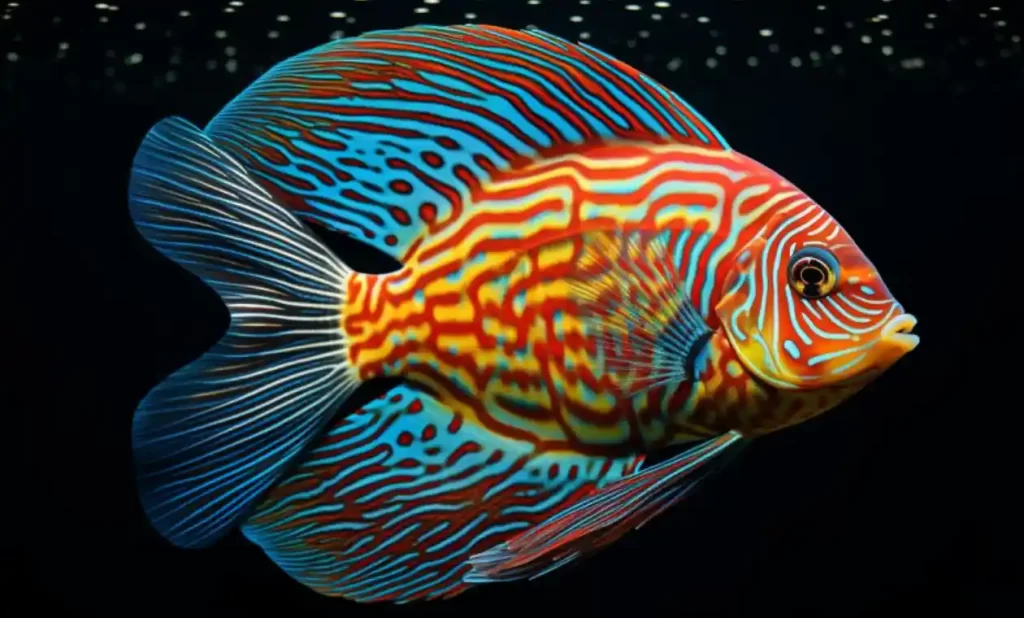
Discus fish are stunning freshwater creatures that have captured the hearts of aquarium enthusiasts worldwide. Known scientifically as Symphysodon, these fish are revered for their vibrant colors, graceful movements, and unique physique. In this article, we will delve into the fascinating world of discus fish, exploring their appearance, habitat, breeding habits, care requirements, and more. Whether you’re a seasoned fishkeeper or simply intrigued by these captivating aquatic beings, join us as we uncover the wonders of discus fish and provide valuable insights for their proper care and appreciation. Get ready to dive into a world of color, beauty, and tranquility as we unravel the secrets of discus fish!
Scientific Name:
The scientific name for discus fish is Symphysodon, which is derived from the Greek words “symphysis” meaning “growing together” and “odontos” meaning “tooth.” This name refers to the fusion of the jaw bones in these fish, which gives them their unique physique.
Life Span:
Discus fish typically have an average lifespan of 8 to 10 years in captivity. With proper care and a suitable environment, some individuals have been known to live even longer.
Top Speed:
Discus fish are not known for their speed. They are more renowned for their graceful swimming style and slow movements, gliding through the water with elegance and poise.
Weight:
The weight of discus fish can vary depending on their size and age. On average, adult discus fish can weigh between 150 to 250 grams (5.3 to 8.8 ounces), but some larger individuals may reach weights of up to 300 grams (10.6 ounces) or more.
Length:
Discus fish can grow to different lengths, depending on their species and overall health. On average, adult discus fish have a diameter ranging from 4 to 6 inches (10 to 15 centimeters). However, some exceptional individuals can reach sizes of up to 8 inches (20 centimeters) or more.
Appearance:
Discus fish are renowned for their breathtaking beauty and striking colors. Their round and laterally compressed body shape gives them a distinct and elegant appearance. Here are some key features that contribute to their captivating appearance:
1. Vibrant Colors: Discus fish exhibit a wide range of vibrant colors, including shades of red, blue, green, brown, and even yellow. These colors can be solid or patterned, with variations among different species and individuals.
2. Striking Patterns: Along with their colors, discus fish often display intricate patterns on their bodies. These patterns can include stripes, spots, or marbling, adding further visual appeal to these stunning fish.
3. Eye-catching Fins: Discus fish have prominent, elongated dorsal and anal fins that extend gracefully along their body. These fins can be adorned with accent colors and intricate patterns, enhancing their overall beauty.
4. Rounded Shape: One of the defining characteristics of discus fish is their round shape. Their body is slightly flattened from side to side, giving them a disk-like appearance, which lends them their name “discus.”
5. Expressive Eyes: Discus fish have large and expressive eyes that are often a contrasting color to their body. These eyes are not only visually appealing but also add to the overall charm of these fish.
Different Species:
Discus fish encompass several distinct species within the Symphysodon genus. Each species has its own unique characteristics, color variations, and natural habitats. Let’s explore the main species of discus fish:
1. Green Discus (Symphysodon aequifasciatus):
The green discus, scientifically known as Symphysodon aequifasciatus, is a species of discus fish that is admired for its stunning green coloration and unique characteristics. Here are some key features of the green discus:
Coloration: The green discus displays a mesmerizing range of green hues. The colors can vary from olive green to vibrant turquoise, creating a striking visual display in an aquarium.
Vertical Stripes: One of the distinguishing features of the green discus is the presence of vertical stripes that run along its body. These stripes add depth and contrast to its overall appearance.
Variations: Within the green discus species, there can be variations in color intensity and patterns. Some individuals may have darker or lighter shades of green, while others may display subtle variations in stripe thickness or spacing.
Natural Habitat: Green discus fish are primarily found in the central and eastern parts of the Amazon River basin. They inhabit slow-moving rivers, flooded areas, and blackwater habitats characterized by soft, acidic water.
When cared for in an aquarium, the green discus brings a vibrant splash of color and an eye-catching pattern to any aquatic setting. Their vertical stripes and stunning green hues make them a popular choice among discus fish enthusiasts.
2. Blue Discus (Symphysodon aequifasciatus):
The blue discus, scientifically known as Symphysodon aequifasciatus, is a captivating species of discus fish known for its beautiful blue coloration and distinct characteristics. Here are some key features of the blue discus:
Coloration: The blue discus showcases shades of blue that can range from pale and subtle to deep and vibrant. The specific shade of blue can vary between individuals, giving each fish its unique charm.
Patterns: Along with its coloration, the blue discus may exhibit various patterns on its body. These patterns can include horizontal stripes, creating an elegant and eye-catching display. Some individuals may also have a mottled or marbled appearance, adding further visual interest.
Natural Habitat: Blue discus fish are native to the Rio Negro and its tributaries in the Amazon River basin. These waterways are characterized by dark, acidic, and soft water conditions. The blue discus has adapted to thrive in these habitats.
In an aquarium setting, the blue discus brings a sense of tranquility with its soothing blue hues and intricate patterns. Its natural grace and captivating coloration make it a sought-after species among discus fish enthusiasts. Proper care and a suitable environment can help these remarkable fish showcase their full beauty.
3. Brown Discus (Symphysodon discus):
The brown discus, scientifically known as Symphysodon discus, is a captivating species of discus fish known for its earthy tones and distinct features. Here are some key features of the brown discus:
Coloration: The brown discus exhibits a range of shades within the brown color spectrum. This can include light tan, caramel, and dark brown hues. The specific shade may vary among individuals and can be influenced by factors such as genetics and environment.
Speckled Appearance: A notable characteristic of the brown discus is its speckled or marbled pattern on the body. These markings create a unique and visually appealing appearance. The speckles can be lighter or darker than the base color, adding depth and texture to the fish’s overall appearance.
Natural Habitat: Brown discus fish are primarily found in the lower reaches of the Amazon River and its tributaries. They inhabit areas with slow-moving water, flooded forests, and regions with soft, acidic water conditions.
In an aquarium, the brown discus adds a warm and natural touch with its earthy coloration and captivating speckled patterns. Its unique appearance and graceful demeanor make it a sought-after choice among discus fish enthusiasts. Proper care, including maintaining appropriate water parameters, can help showcase the true beauty of the brown discus in an aquatic setting.
It’s important to note that discus fish can also exhibit color variations within each species, influenced by factors such as genetics, diet, and environmental conditions. These variations contribute to the diverse and captivating range of colors seen in discus fish specimens.
As you explore the world of discus fish, you may encounter other variations and hybrids bred through selective breeding. These hybrids often display combinations of colors and patterns from different species, creating a stunning array of possibilities for fishkeepers and collectors.
Understanding the different species of discus fish allows enthusiasts to appreciate the nuances and characteristics specific to each variety. It also aids in making informed decisions when selecting and caring for these captivating aquatic creatures.
Natural Habitats
The natural habitats of discus fish are predominantly found in the Amazon River basin and its surrounding areas in South America. These habitats provide the ideal conditions for discus fish to thrive. Here are some key aspects of their natural habitats:
1. Amazon River Basin: Discus fish are native to the extensive Amazon River basin, which covers several countries, including Brazil, Peru, and Colombia. Within this basin, they inhabit various rivers, tributaries, and flooded forest areas.
2. Slow-Moving Rivers: Discus fish are typically found in areas with slow-moving or still waters. They prefer calm, tranquil environments rather than strong currents. These areas allow them to swim leisurely and gracefully through the water.
3. Flooded Forests: During the rainy season, parts of the Amazon River basin experience flooding, resulting in the creation of flooded forest areas. Discus fish are known to inhabit these flooded forest regions, where they find ample hiding spots among submerged vegetation and tree roots.
4. Soft, Acidic Water: Discus fish have adapted to thrive in soft and acidic water conditions. The natural waters in their habitats tend to have low pH levels and are relatively soft due to the presence of decaying organic matter and vegetation.
5. Shaded Areas: In their natural habitats, discus fish often seek shelter and shade. Overhanging vegetation, fallen branches, and submerged roots provide hiding places and protection from direct sunlight.
6. Leaf Litter: The forested areas surrounding the rivers and streams where discus fish reside contribute to their habitats. The forest canopy provides cover and shades the water, while fallen leaves accumulate on the riverbed, creating a natural substrate and contributing to the acidic water conditions preferred by discus fish.
Discus Fish Distribution
Discus fish have a limited distribution and are native to the Amazon River basin in South America. They are primarily found in the countries of Brazil, Peru, and Colombia, which encompass the vast and diverse Amazon region. Within this area, discus fish inhabit various rivers, tributaries, and flooded forest areas.
The Amazon River basin is home to a wide range of ecosystems, including slow-moving rivers, blackwater tributaries, and flooded forest regions. These habitats provide the ideal conditions for discus fish to thrive, with their calm waters, abundant vegetation, and soft, acidic water characteristics.
Specifically, discus fish are known to inhabit areas such as the Rio Negro and its tributaries, which are renowned for their dark, tea-colored waters. These blackwater environments, with their low pH levels and high levels of dissolved humic acids, create the preferred conditions for discus fish.
Habits and Lifestyle:
Discus fish have fascinating habits and a unique lifestyle that make them intriguing to observe and care for. Understanding their natural behaviors can help fishkeepers provide the optimal environment and care for these captivating creatures. Here are some key aspects of discus fish habits and lifestyle:
1. Social Nature: Discus fish are highly social beings. In their natural habitats, they form groups and live in close proximity to one another. They engage in social interactions such as displaying hierarchical behavior, establishing territories, and engaging in courtship rituals.
2. Peaceful Temperament: Discus fish are generally peaceful and non-aggressive. They prefer calm environments and are known for their gentle disposition. However, it’s important to note that they can become stressed or territorial if they feel threatened or if their environment is not suitable.
3. Schooling Behavior: In their natural habitats, discus fish are often observed in schools, swimming together in synchronized movements. Being part of a group provides them with a sense of security and helps reduce stress levels. When kept in aquariums, it is recommended to keep discus fish in groups of at least six individuals to mimic their natural schooling behavior.
4. Parental Care: Discus fish are dedicated parents and exhibit remarkable parental care. After mating, they carefully select and clean a suitable spawning site, usually a vertical surface, where the female will lay her eggs. Both parents actively participate in guarding the eggs and tending to the fry, ensuring their safety and providing them with necessary nutrients until they are ready to swim independently.
5. Diurnal Activity: Discus fish are diurnal, meaning they are primarily active during the day. They exhibit their vibrant colors and engage in feeding, socializing, and exploring their environment during daylight hours. Providing a consistent light cycle in their aquarium helps maintain their natural activity patterns.
6. Exploratory Nature: Discus fish are curious by nature and enjoy exploring their surroundings. They appreciate having ample space to swim, as well as hiding spots and vegetation to investigate and seek shelter. Providing a well-decorated aquarium with plants, driftwood, and rocks offers them opportunities for exploration and creates a stimulating environment.
Farming and Breeding Discus Fish:
Farming and breeding discus fish has gained popularity among aquarium enthusiasts and fish breeders due to their captivating beauty and unique characteristics. Let’s explore the key aspects of farming and breeding discus fish:
1. Selecting Breeding Stock: The process of breeding discus fish begins with selecting healthy and genetically diverse breeding stock. It’s important to choose adult fish that exhibit desirable traits such as vibrant colors, well-rounded body shape, and good overall health. Selecting compatible pairs is crucial to ensure successful breeding and offspring quality.
2. Conditioning Period: Prior to breeding, discus fish require a conditioning period to ensure they are in optimal health and reproductive condition. This involves providing a nutritious and varied diet, maintaining suitable water parameters, and creating a stress-free environment to promote breeding readiness.
3. Spawning Behavior: Discus fish are substrate spawners, meaning they lay their eggs on a vertical surface. A pair of discus fish will engage in courtship rituals, displaying behaviors such as lip-locking, fin flaring, and circular swimming patterns. Once a suitable spawning site, such as a flat rock or the aquarium glass, is chosen, the female will lay her eggs, and the male will fertilize them.
4. Parental Care: One remarkable aspect of discus fish breeding is their high level of parental care. Both parents actively participate in guarding and caring for the eggs and fry. They fan the eggs with their fins to provide oxygenation and remove waste. After hatching, the parents will continue to protect and tend to the fry, guiding them to food sources and providing them with necessary nutrients.
5. Rearing Fry: Successfully rearing discus fish fry requires careful attention to water quality, feeding, and maintaining suitable tank conditions. Initially, the fry will feed on the mucus secreted by their parents and gradually transition to other food sources such as infusoria, baby brine shrimp, and finely powdered commercial fry food. Regular water changes and monitoring are essential to ensure optimal growth and development.
6. Commercial Discus Fish Farming: Discus fish farming has become a specialized industry, with dedicated facilities and techniques to breed and raise discus fish on a larger scale. These commercial farms employ advanced breeding and rearing practices to produce a variety of discus fish strains and color variations for the aquarium trade.
Care and Maintenance:
Proper care and maintenance are crucial for the health and well-being of discus fish. Creating and maintaining the right environment helps ensure that these beautiful fish thrive and display their vibrant colors. Here are some key aspects of care and maintenance for discus fish:
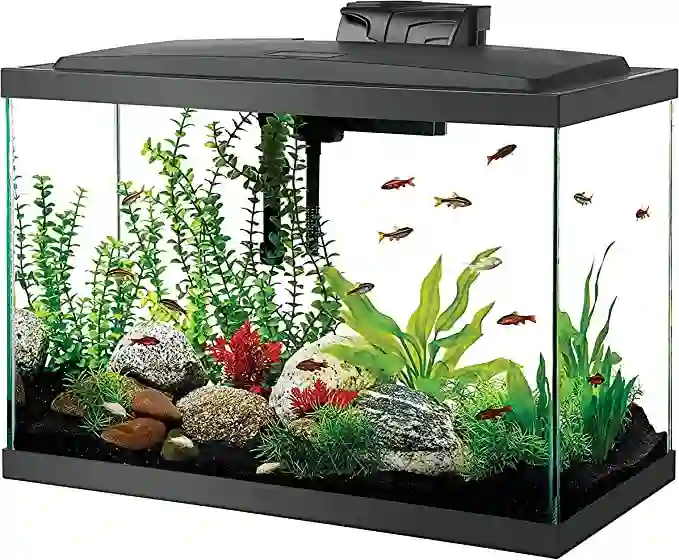
1. Tank Size and Setupv: Discus fish require spacious tanks to swim and establish territories. A minimum tank size of 55 gallons (200 liters) is recommended for a small group of discus fish. Provide hiding places, such as plants, driftwood, and rocks, to create a sense of security. Maintain a clean and well-maintained aquarium with regular water changes and proper filtration.
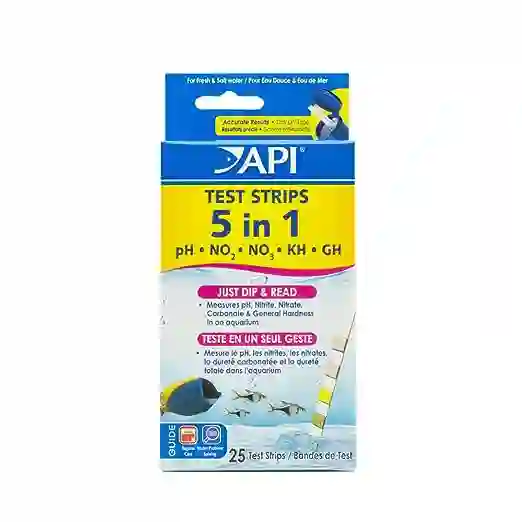
2. Water Parameters: Discus fish are sensitive to water conditions, so maintaining appropriate water parameters is crucial. Optimal conditions include a temperature range of 82-86°F (28-30°C), pH level between 6.0 and 7.0, and soft to slightly acidic water. Use a reliable heater and thermometer to maintain a stable temperature, and regularly test water parameters to ensure they are within the appropriate range.
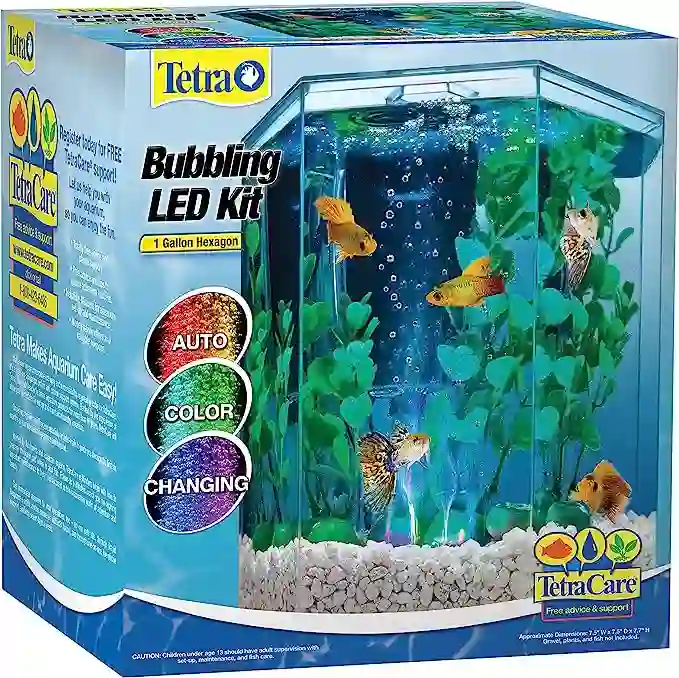
3. Filtration and Water Quality: Good filtration is essential for maintaining water quality. Use a high-quality filter suitable for the tank size and ensure proper mechanical, biological, and chemical filtration. Regularly clean and maintain the filter to prevent the buildup of waste and ensure efficient filtration. Perform regular water changes, typically around 20-30% weekly, to maintain optimal water quality.
4. Tank Mates: When selecting tank mates for discus fish, choose peaceful and compatible species that can thrive in similar water conditions. Avoid aggressive or fin-nipping species that may stress or harm the discus fish. Research and select suitable tank mates that won’t compete for resources and have similar temperature and water parameter requirements.
5. Feeding: Provide a balanced diet consisting of high-quality pellets, frozen or live foods, and occasional vegetable matter. Feed them multiple times a day in small portions, ensuring they consume the food within a few minutes. Avoid overfeeding to prevent water pollution and obesity in the fish.
6. Observation and Monitoring: Regularly observe the behavior, appetite, and appearance of your discus fish. Look for signs of stress, illness, or abnormal behavior. Monitor water parameters regularly using appropriate test kits to identify any changes or fluctuations. Promptly address any issues that arise, such as water quality problems or signs of disease.
7. Quarantine New Fish: When introducing new discus fish or any other fish to the aquarium, it’s important to quarantine them first. This helps prevent the spread of diseases and parasites to the existing fish population. Quarantine new arrivals in a separate tank for a few weeks while closely monitoring their health before introducing them to the main aquarium.
Best Tank Mates for Discus fish
When selecting tank mates for discus fish, it’s important to choose species that are compatible in terms of water parameters, temperament, and size. Here are some suitable tank mates that can coexist peacefully with discus fish:
Tetras: Many tetra species make great tank mates for discus fish. Examples include cardinal tetras, rummy-nose tetras, neon tetras, and emperor tetras. These small, peaceful fish add color and activity to the aquarium without posing a threat to the discus.
Corydoras Catfish: Corydoras catfish are popular bottom-dwelling fish that can thrive alongside discus. They are peaceful, non-aggressive, and help keep the tank clean by scavenging for food particles. Look for species such as Corydoras sterbai or Corydoras panda.
Angelfish: In larger aquariums, angelfish can be suitable tank mates for discus. However, it’s important to monitor their compatibility, as angelfish can become territorial during breeding. Choose angelfish that are similar in size to the discus and provide ample space and hiding spots.
Dwarf Cichlids: Certain dwarf cichlid species can coexist peacefully with discus. Key examples include Apistogramma species like Apistogramma cacatuoides or Apistogramma borellii. These small cichlids have similar water parameter requirements and add diversity to the tank.
Loricariid Catfish: Loricariid catfish, such as the popular bristlenose pleco (Ancistrus sp.), can be compatible tank mates. They help with algae control and occupy the lower areas of the tank without causing any issues for the discus.
Rasboras: Rasboras, such as harlequin rasboras or espei rasboras, are peaceful and active schooling fish that can coexist with discus. They add movement and color to the aquarium while respecting the space of the discus.
Gouramis: Certain gourami species, like honey gouramis or pearl gouramis, can make suitable tank mates for discus. Ensure that the gouramis are not overly aggressive or territorial and provide enough space for both species to thrive.
Remember to introduce tank mates gradually and monitor their interactions closely. It’s crucial to have a properly sized aquarium that can accommodate the needs of both the discus fish and their tank mates. Providing ample hiding spots, plants, and territories within the tank can help reduce stress and promote a harmonious community.
Additionally, it’s advisable to research each species’ specific requirements, including water temperature, pH, and diet, to ensure compatibility with the discus fish. Observing the behavior of the tank mates and the discus will help identify any potential issues and allow for necessary adjustments.
Common Diseases and Treatment:
While discus fish are generally hardy and resilient, they can be susceptible to certain diseases and health issues. Prompt identification and appropriate treatment are crucial to ensure the well-being of these beautiful fish. Here are some common diseases that discus fish may encounter and their potential treatments:
1. Ich (Ichthyophthirius multifiliis):
– Symptoms: White spots resembling grains of salt on the fish’s body, fins, and gills. Affected fish may show signs of scratching against objects.
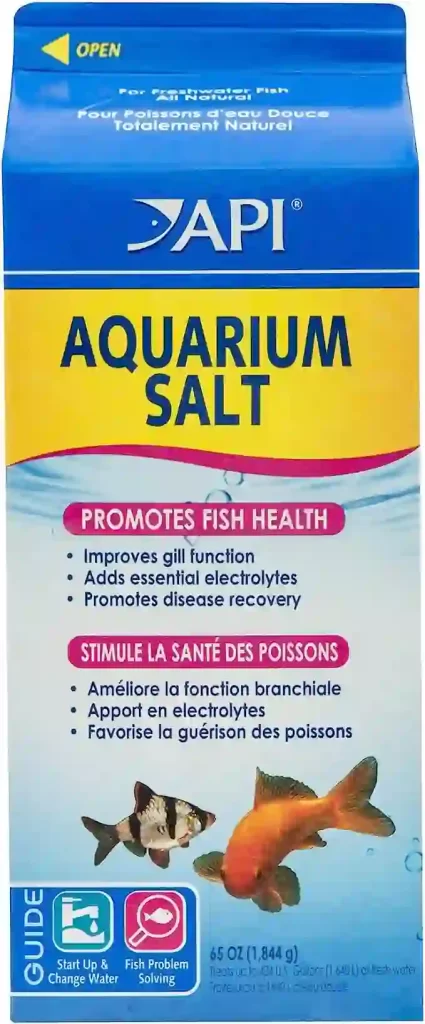
– Treatment: Raise the water temperature to around 86°F (30°C) to accelerate the life cycle of the parasite. Administer appropriate medications, such as malachite green or copper-based treatments, following the manufacturer’s instructions.
2. Fin Rot (Pseudomonas or Aeromonas bacterial infection):
– Symptoms: Degradation of fins, fraying, discoloration, and possible inflammation. Affected fish may exhibit lethargy and loss of appetite.
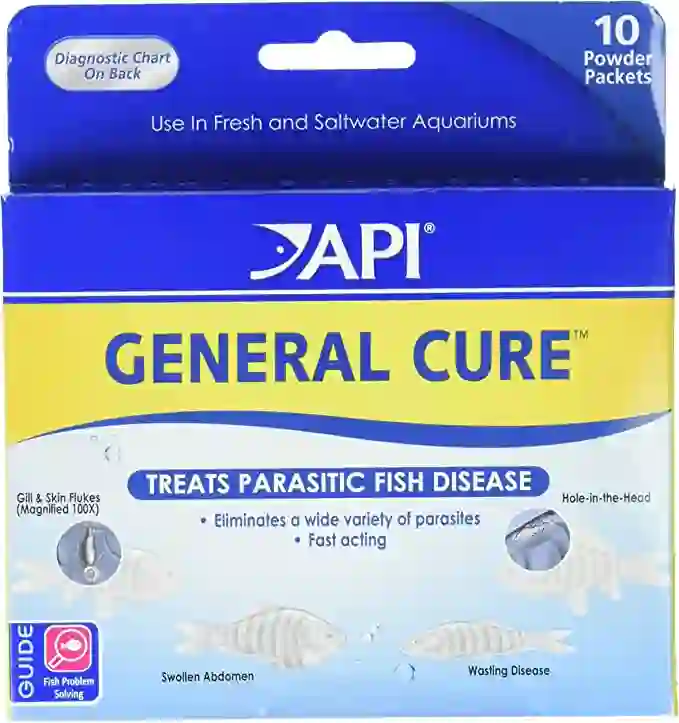
– Treatment: Improve water quality through regular water changes. Administer antibacterial medications, such as antibiotics or antimicrobial treatments, as recommended by a veterinarian or aquatic specialist.
3. Hole-in-the-Head Disease (Hexamita or Spironucleus infection):
– Symptoms: Small holes or pits forming on the fish’s head, typically accompanied by a loss of appetite, weight loss, and lethargy.
– Treatment: Improve water quality and provide a varied and balanced diet. Administer metronidazole or other suitable anti-parasitic medications following professional advice.
4. Velvet Disease (Piscinoodinium or Oodinium):
– Symptoms: Fine yellowish-gold or rusty-brown dust-like particles on the fish’s body and fins. Infected fish may display respiratory distress, flashing, and lethargy.
– Treatment: Increase the water temperature slightly and administer copper-based medications or other appropriate anti-parasitic treatments.
5. Bacterial Infections:
– Symptoms: Various symptoms can indicate bacterial infections, including red sores, ulcers, open wounds, abnormal swelling, or discoloration of the skin.

– Treatment: Identify the specific bacterial strain and administer suitable antibiotics or antibacterial treatments as prescribed by a veterinarian or aquatic specialist.
In addition to these common diseases, discus fish may also face other health issues such as fungal infections, internal parasites, or swim bladder disorders. It’s essential to promptly consult a veterinarian or experienced aquatic specialist for accurate diagnosis and treatment options.
Preventive measures, such as maintaining optimal water quality, providing a balanced diet, avoiding overcrowding, and quarantining new fish, can help minimize the risk of diseases. Regular observation, early detection, and appropriate treatment are crucial for the well-being and long-term health of discus fish.
Best Food for Discus Fish
When it comes to feeding discus fish, there are several high-quality food options available online that cater to their specific nutritional needs. Here are some popular and easily accessible food choices for discus fish that you can find online:
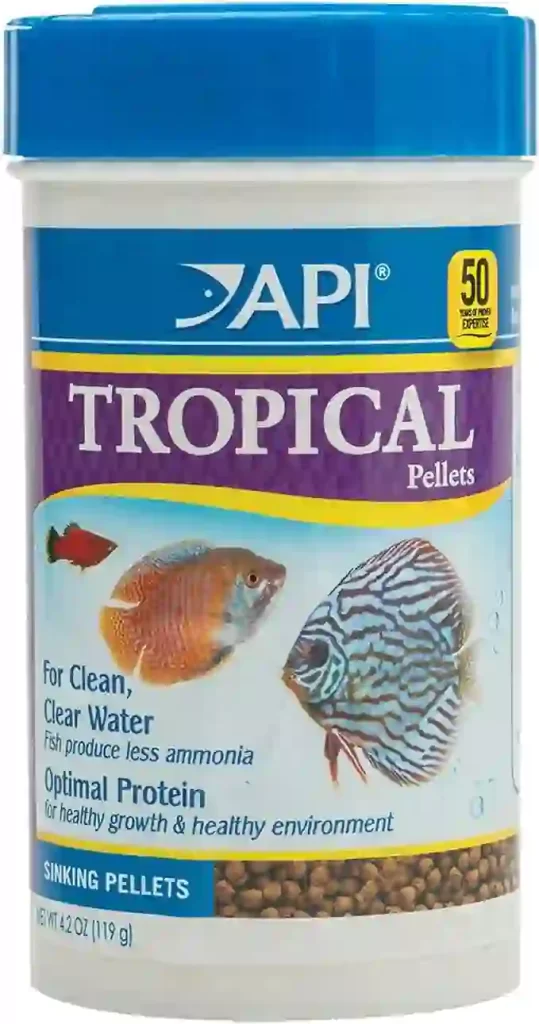
Discus Pellets: There are specialized discus pellets formulated to provide balanced nutrition for these fish. Look for reputable brands that offer pellets specifically designed for discus fish. These pellets are usually fortified with essential vitamins, minerals, and proteins to support the health and vibrant colors of discus fish.
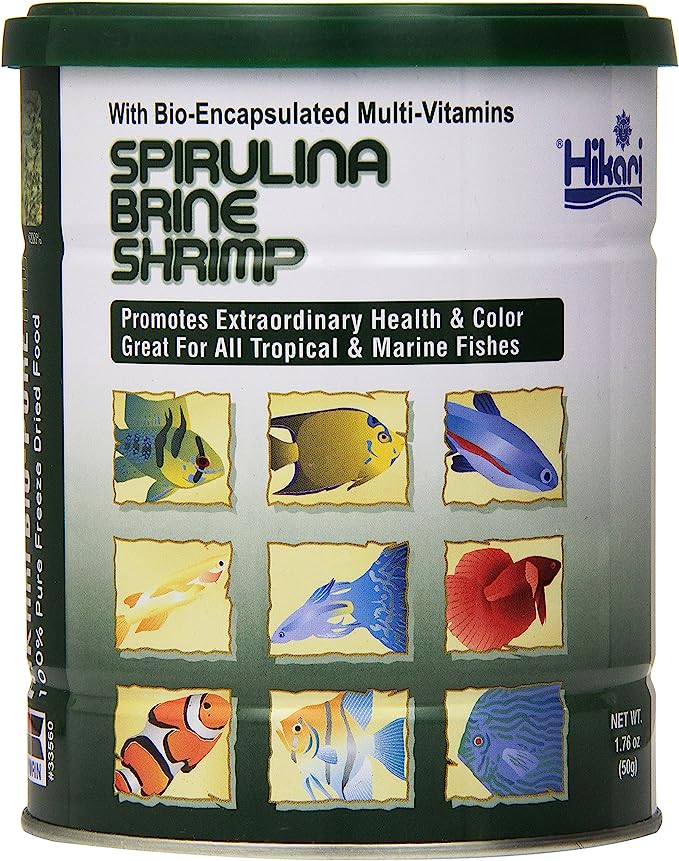
Freeze-Dried or Frozen Foods: Frozen or freeze-dried foods are another excellent option for discus fish. These include bloodworms, brine shrimp, daphnia, and other small invertebrates. Frozen foods retain more nutrients compared to their freeze-dried counterparts. You can find various frozen or freeze-dried options specifically made for discus fish.
Beef Heart Mix: Beef heart mix is a popular food choice for discus fish, as it mimics their natural diet. This mix usually contains a combination of beef heart, vitamins, minerals, and other ingredients. It provides a protein-rich diet that can enhance growth and coloration in discus fish.

Spirulina Flakes: Spirulina flakes are a good addition to the diet of discus fish. These flakes are rich in plant-based nutrients, including spirulina algae, which helps support digestion and immune system health. Look for high-quality spirulina flakes suitable for discus fish.
High-Quality Color Enhancing Pellets: Discus fish are known for their vibrant colors, and feeding them color-enhancing pellets can help bring out their natural hues. Look for pellets specifically formulated to enhance the colors of discus fish, often containing natural color enhancers like astaxanthin or krill.
When purchasing online, make sure to choose reputable sellers and brands known for their quality products. Read customer reviews and product descriptions to ensure that the food you select is suitable for discus fish and meets their nutritional requirements.
Remember to provide a varied diet to ensure a well-rounded nutritional profile. Offering a combination of pellets, frozen or freeze-dried foods, and occasional vegetable matter will help keep your discus fish healthy and vibrant.
It’s important to note that individual fish may have specific dietary preferences or requirements. Monitor their feeding behavior and adjust the diet accordingly to ensure optimal nutrition and overall health.
Conservation Status and Threats:
Discus fish, as a whole, are not currently classified under a specific conservation status by organizations such as the International Union for Conservation of Nature (IUCN). However, it’s important to note that various factors can pose threats to their populations in the wild. Here are some key aspects regarding the conservation status and potential threats to discus fish:
Habitat Loss: The primary threat to discus fish is habitat loss. Deforestation, particularly in the Amazon Rainforest, affects their natural habitats by destroying their preferred flooded forest areas and disrupting the delicate balance of the ecosystem they rely on.
Water Pollution: Pollution, such as industrial runoff, agricultural runoff, and improper waste disposal, can negatively impact the water quality in rivers and tributaries where discus fish reside. Pollution can lead to the degradation of their habitats and result in adverse effects on their health and reproduction.
Overfishing and Collection for the Aquarium Trade: Discus fish are highly sought after in the aquarium trade due to their beauty and unique characteristics. Overfishing and unsustainable collection practices can put pressure on wild populations. It is important for collectors, breeders, and sellers to adhere to ethical practices and support sustainable sources for discus fish in the aquarium trade.
Climate Change: Climate change poses a long-term threat to discus fish populations and their habitats. Rising temperatures, changes in rainfall patterns, and alterations in water chemistry can impact their ability to thrive in their natural environments. The potential effects of climate change on discus fish populations are still being studied.
While discus fish are not currently considered endangered or threatened as a species, it is essential to be mindful of their vulnerability to habitat degradation and other anthropogenic factors. Conservation efforts focus on protecting their natural habitats, promoting sustainable collection practices, and supporting responsible breeding programs.
In conclusion, discus fish are captivating and beautiful aquatic creatures that have captured the fascination of aquarium enthusiasts worldwide. They are known for their vibrant colors, unique patterns, and graceful swimming behavior. With their social nature, peaceful temperament, and remarkable parental care, discus fish exhibit fascinating habits and a distinct lifestyle.
Creating the right environment and providing proper care and maintenance are crucial for the well-being of discus fish. This includes providing a suitable tank size, maintaining optimal water parameters, selecting compatible tank mates, and offering a balanced and varied diet. By understanding their natural behaviors and meeting their specific needs, fishkeepers can ensure that discus fish thrive and showcase their full potential.
While discus fish are not currently classified under a specific conservation status, it is important to be mindful of the threats they face in the wild. Habitat loss, water pollution, overfishing, and climate change can all impact their populations. Supporting sustainable collection practices, responsible breeding programs, and conservation efforts can contribute to the long-term preservation of these magnificent fish.
Discus fish offer a rewarding and fulfilling experience for aquarium enthusiasts. Their vibrant colors, social nature, and unique characteristics make them a prized addition to any aquarium. By providing proper care, understanding their behaviors, and appreciating their beauty, we can ensure the well-being and enjoyment of discus fish for years to come.
Discus Fish FAQ
How many discus fish can be kept in a tank?
It is recommended to keep discus fish in groups of at least six individuals. This helps mimic their natural schooling behavior and promotes their social well-being. A minimum tank size of 55 gallons (200 liters) is typically suitable for a small group of discus fish.
Can discus fish be kept with other fish species?
Discus fish can be kept with compatible fish species that have similar water temperature and water parameter requirements. Avoid aggressive or fin-nipping species that may stress or harm the discus fish. Research and select suitable tank mates to ensure compatibility.
How often should discus fish be fed?
Discus fish should be fed multiple times a day, with smaller portions at each feeding. Aim for at least three to four feedings per day, ensuring they consume the food within a few minutes. Avoid overfeeding, as excess food can pollute the water and lead to health issues.
What is the lifespan of discus fish?
With proper care, discus fish can live for approximately 8 to 15 years. Providing a suitable environment, balanced diet, and optimal water conditions can contribute to their longevity.
Can discus fish be kept in a planted aquarium?
Yes, discus fish can be kept in a planted aquarium. Live plants provide a natural and enriching environment for discus fish, offering hiding places, shade, and oxygenation. However, it's important to select plants that can tolerate the slightly warmer water temperatures preferred by discus fish.
Are discus fish difficult to care for?
Discus fish require a bit more care and attention compared to some other fish species. They are sensitive to water conditions and temperature fluctuations, so maintaining stable water parameters is crucial. However, with proper research, setup, and regular maintenance, they can be successfully kept and cared for.
Can discus fish be bred in a home aquarium?
Yes, discus fish can be bred in a home aquarium with proper setup and preparation. Breeding discus fish requires providing suitable spawning sites, maintaining optimal water conditions, and ensuring compatibility between breeding pairs. However, breeding discus fish can be a more advanced endeavor that may require experience and knowledge.
Do discus fish change color as they grow?
Yes, discus fish can undergo color changes as they grow. Younger discus fish may have less intense or duller colors compared to mature adults. As they develop and reach sexual maturity, their colors tend to intensify and become more vibrant.
Are discus fish prone to any specific diseases?
Discus fish can be susceptible to certain diseases such as ich (white spot disease), fin rot, and bacterial infections. Maintaining optimal water quality, providing a balanced diet, and regular observation can help prevent and address common diseases. Prompt identification and appropriate treatment are crucial if any health issues arise.

